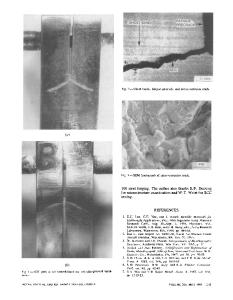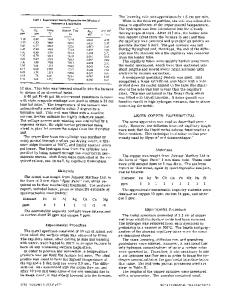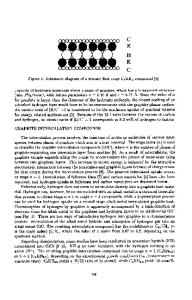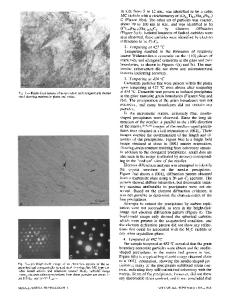Trap-governed hydrogen diffusivity and uptake capacity in ultrahigh-strength AERMET 100 steel
- PDF / 359,402 Bytes
- 14 Pages / 612 x 792 pts (letter) Page_size
- 81 Downloads / 306 Views
N A. Effect of Trapping on H Diffusivity and Solubility in Steels
THE lattice diffusivity of hydrogen (H) in steel is impeded strongly by the presence of microstructural inhomogeneities including grain boundaries, dislocations, carbides, and nonmetallic particles, which are potential H trapping sites.[1] Whether a microstructural feature can act as a trapping site is governed by a potential-energy well (and binding energy (Eb)) relative to normal interstitial positions in the Fe lattice. With increasing strength of trapping proportional to the energy well depth, traps are categorized as reversible then irreversible.[2] In the absence of traps, H diffusion occurs by random-jump migration between interstitial lattice positions, with a very short residence time for a diffusing H atom.[2] Hydrogen diffusion is then described by the ideal lattice diffusivity (DL) and governed by the activation energy for diffusion associated with the energy barrier (or lattice migration energy (Em)) between interstitial positions. In pure annealed Fe, DL is 1.3 ⫻ 10⫺5 cm2/s at 25 ⬚C,[3] and Em is 7 kJ/mol (0.07 eV/atom).[2] Reversible trap sites with Eb ⬎ Em create an “effectively” higher barrier to H movement. Consequently, trapping decreases the rate of transport of H through the lattice and increases the activation energy for diffusion. This trap-affected, or apparent, H diffusivity (DH) RICHARD L.S. THOMAS, formerly Graduate Student, Department of Materials Science and Engineering, University of Virginia, is R&D Engineer, Medtronic Ave., Santa Rosa, CA 95403. DAOMING LI, Research Scientist, and RICHARD P. GANGLOFF and JOHN R. SCULLY, Professors, are with the Department of Materials Science and Engineering, University of Virginia, Charlottesville, VA 22904-4745. Contact e-mail: [email protected] Manuscript submitted October 4, 2001. METALLURGICAL AND MATERIALS TRANSACTIONS A
is up to three orders of magnitude lower than DL , depending on the nature and extent of trapping.[3,4] The effect of each type of trap depends on dissolved H concentration. In a lattice containing only irreversible traps which can be saturated, H diffusivity decreases to DH during H uptake, until the irreversible traps fill with H. Ideal irreversible traps are often saturable at a low lattice H concentration and, once filled, no longer interact with dissolved H; consequently, the apparent DH value increases to DL . In contrast, reversibly trapped H is in “dynamic equilibrium” with H dissolved in the lattice and represents a permanent “impedance” to H transport.[5] Therefore, the apparent DH value in a lattice containing reversible traps is always less than DL , and the difference is intensified at a lower H concentration.[5] In a perfect lattice, solubility is governed by the heat of solution for the solute in an ideal dilute solution.[6] For a heat of solution for H in Fe equal to 28.6 kJ/mol, the perfect lattice H solubility (C0) in equilibrium with 105 Pa H2 is 3 ⫻ 10⫺4 wppm at 25 ⬚C.[2] In steels, however, the apparent H solubility (CH) is increased dramati
Data Loading...











